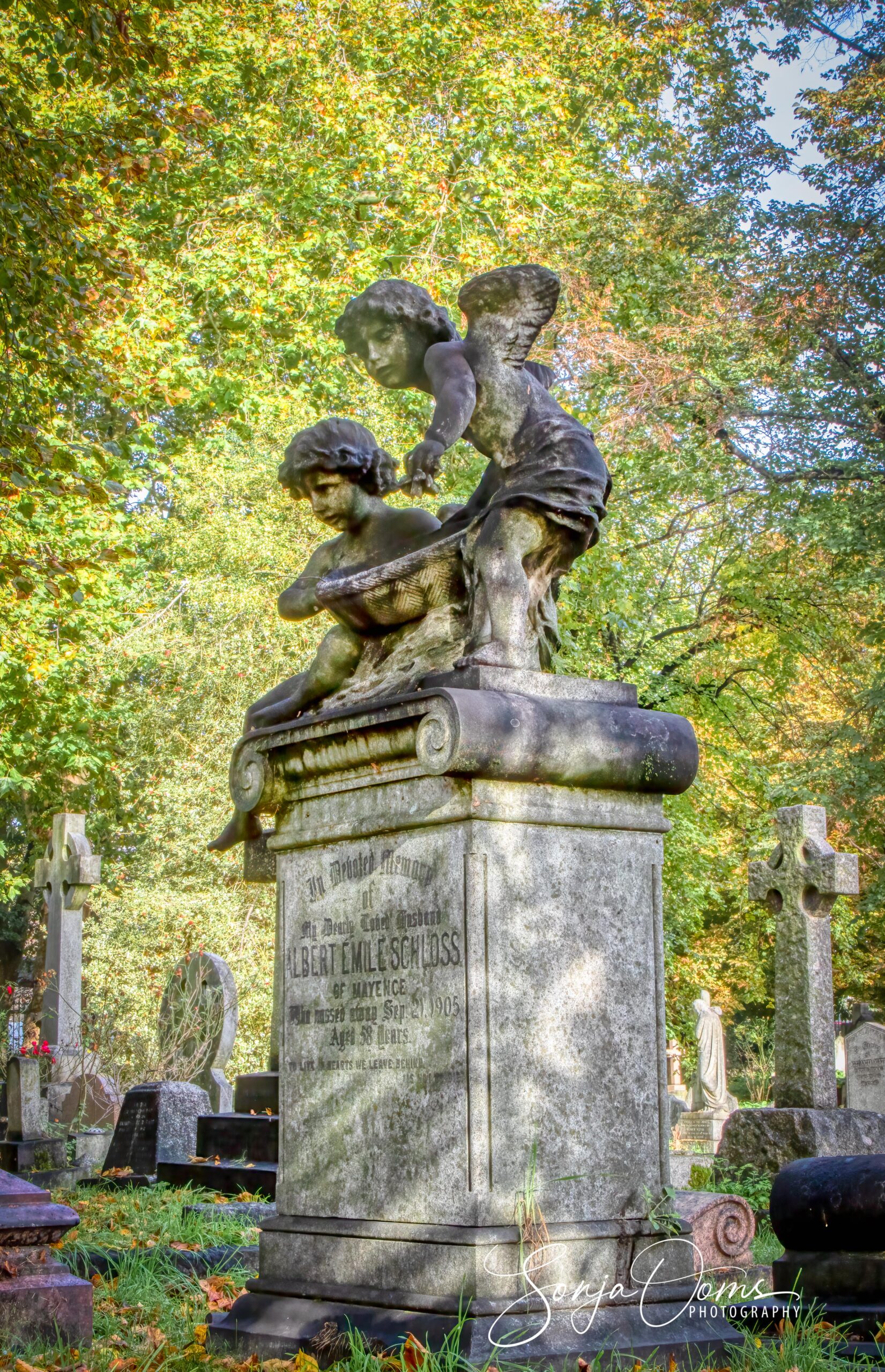Cemeteries can be peaceful, beautiful places. Come wander with me through one of these grand and picturesque London cemeteries and let me tell you a little about the fascinating history and the stories of its residents.
Brompton Cemetery is one of the ‘Magnificent Seven’ burial sites established in the 19th century — a time when London’s dead threatened to drown the living. The cemetery boasts a tree-lined avenue, classical colonnades, underground catacombs … it is one of Britain’s oldest and most distinguished garden cemeteries. Some 35,000 monuments, from simple headstones to substantial mausolea, mark more than 205,000 resting places. The site includes large plots for family mausolea, but also many common graves where coffins are piled deep into the earth.
By the early years of the 19th century, inner city burial grounds, mostly churchyards, had long been unable to cope with the number of burials and were seen as a hazard to health and an undignified way to treat the dead. In 1837 a decision was made to lay out a new burial ground in Brompton, London. The cemetery became one of seven large, new cemeteries founded by private companies in the mid-19th century (sometimes called the ‘Magnificent Seven’) forming a ring around the edge of London.
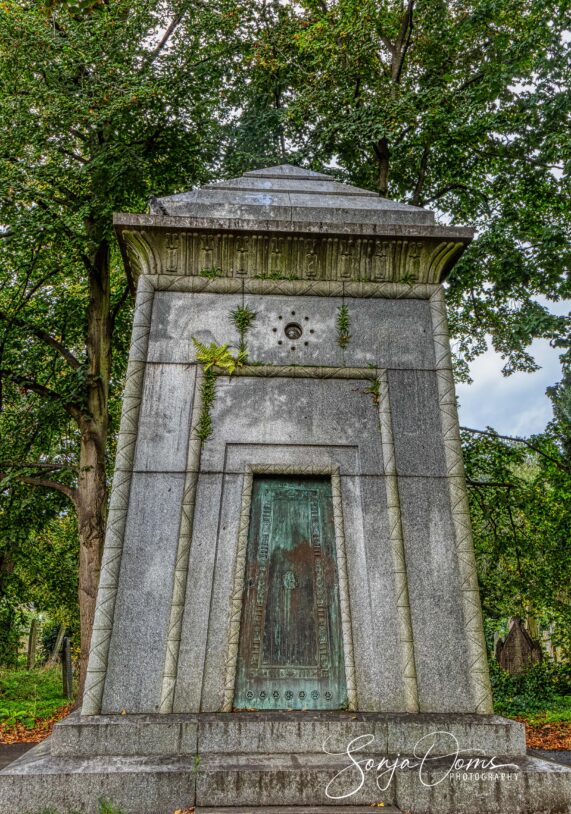
And …it’s got a time machine…
The tomb of wealthy socialite Hannah Courtoy is a fully functioning Victorian time machine, a teleportation device that connects seven different cemeteries. And you probably also believe in Santa Claus?
Popular theory suggests that Courtoy, who died in 1849, was friend with Joseph Bonomi, sculptor and Egyptologist who designed her tomb (Bonomi himself rests within haunting distance of Courtoy) The interior of this listed monument is said to feature ornate hieroglyphics and some believe that Bonomi, alongside his business partner Samuel Alfred Warner, learned the secrets of time travel during an expedition to the pyramids. Good luck getting this thing to work though as someone seems to have misplaced the key.
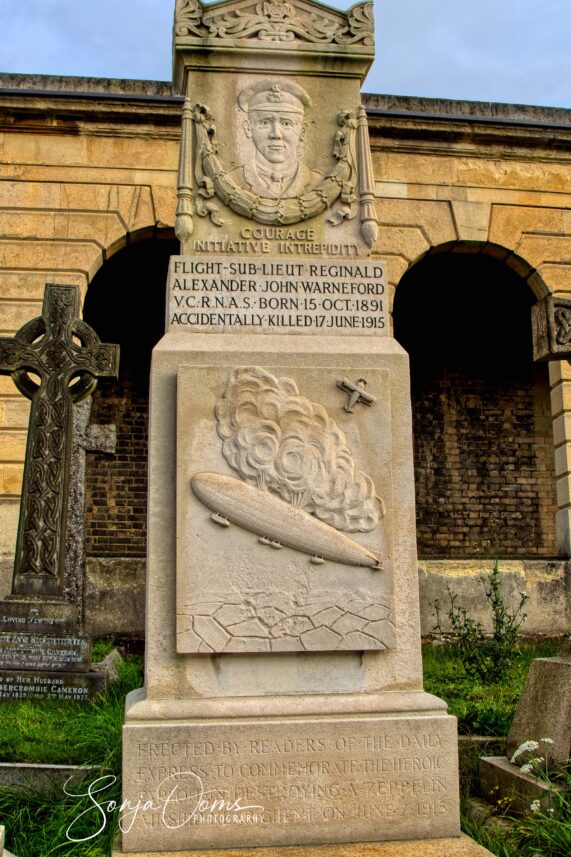
A very unlucky war hero…
Amongst the dark Victorian crosses and angels, I found this memorial. The face of a young man stares out from an impressive, well cared for headstone. Beneath the inscription is the image of a Zeppelin falling to the ground in flames while a comparatively tiny aircraft flies to safety. The headstone commemorates the bravery of one of the British Armed Forces’ first heroes of aviation – Flight Sub-Lieutenant Reginald Alexander John Warneford. He was stationed in Dunkirk. His bravery quickly became obvious, and he soon made a name for himself as a daring pilot who chased enemy aircraft and attacked enemy targets on the ground.
On 7th June 1915, he destroyed an enormous German Zeppelin. The bombs he dropped to cause the Zeppelin to explode also damaged his airplane. He was forced to land in enemy territory, was able to repair his plane and took off again.
Within thirty six hours of downing the Zeppelin, Rex was awarded the Victoria Cross – the highest possible military honour for gallantry. He was also awarded the French Légion d’honneur. And was killed in an accident only days later, just 23 years old, flying over France with an American journalist.
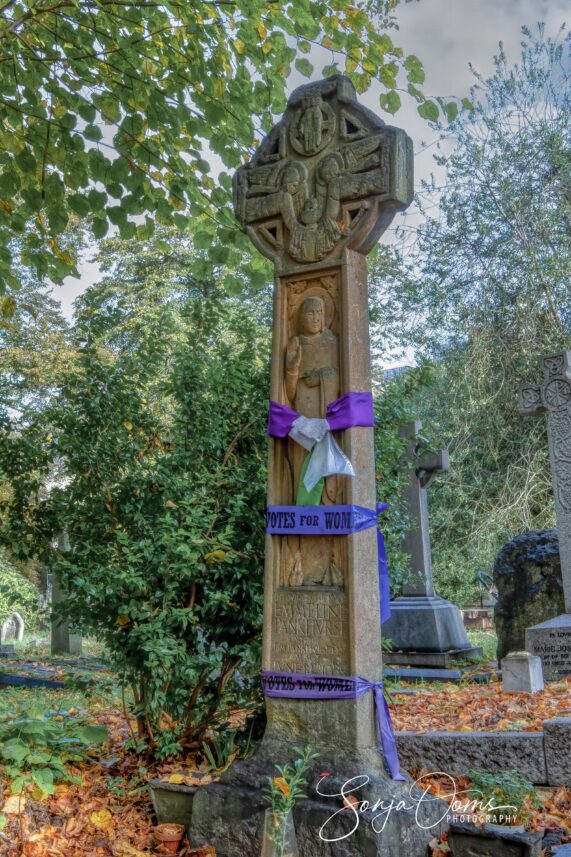
Emmeline Pankhurst (1858-1928)
Or what about Emmeline Pankhurst “a committed suffragist – a campaigner for women’s right to vote” In 1903 she formed the Women’s Social and Political Union (WSPU) and began a peaceful campaign for the vote.
Emmeline travelled extensively, giving speeches and campaigning across Britain and in America, Canada and even Russia.
The motto of the WSPU was ‘Deeds not words’ and, in the face of continued opposition, the suffragettes became more militant. They were condemned by many for marching, heckling, setting fires and throwing stones, but it kept their campaign in the news. It took until 1928 for women over 21 to be given the right to vote. Tragically, Emmeline died three weeks before the law was passed.
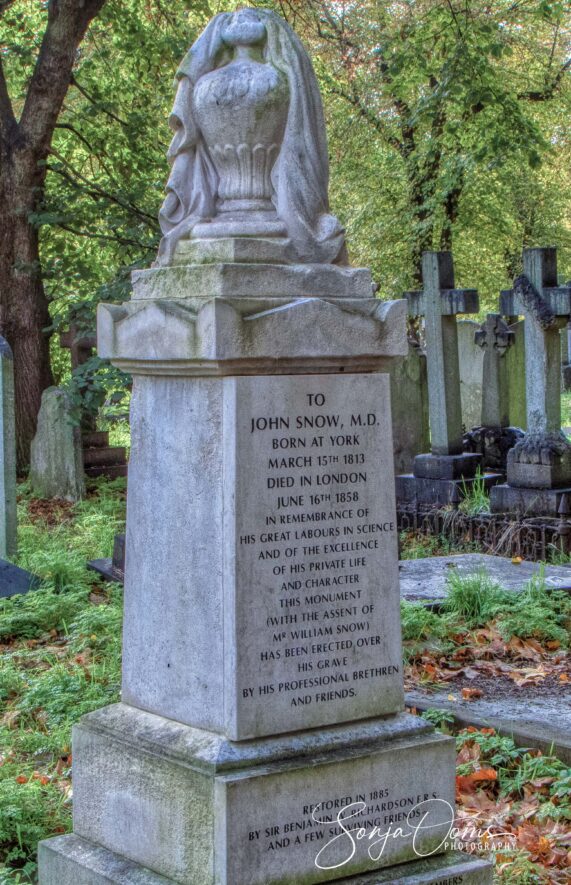
And thank heavens for this resident who gave us anesthesia.
Not to confuse with the “Winter is Coming” Jon Snow from Winterfell, the British John Snow (1813 – 1858) was an English physician and a leader in the development of anesthesia and medical hygiene.
He is considered one of the founders of modern epidemiology, in part because of his work in tracing the source of a cholera outbreak in Soho, London, in 1854. He inspired the adoption of anesthesia as well as fundamental changes in the water and waste systems of London, which led to similar changes in other cities, and a significant improvement in general public health around the world.
And so many other interesting stories…
One of the residents invented sunglasses… Sir William Crookes was one of the most famed scientists of his era, knighted in 1897.
My future’s so bright I gotta wear shades, unusually for a man of science, Crookes believed in psychic phenomena and held seances in his own home much to the ridicule of his peers. Nonetheless his numerous scientific accomplishments speak for themselves and include the invention of the radiometer, the spinthariscope (whatever that might be) and a precursor to modern television.
And his work with ophthalmology led to Crookes’s development of sunglasses.
And another one invented traffic lights. John Peake Knight designed the first traffic lights in the world. They were situated opposite the Houses of Parliament, at the junction of Great George Street and Bridge Street in Westminster, and were gas powered.
Knight was a railway manager who designed signalling systems which he adapted for use on the road. His lights were consistently manned but a leaky gas main resulted in one of the traffic lights exploding in the face of the policeman. This shaky start meant it was 40 years before traffic lights would reappear.
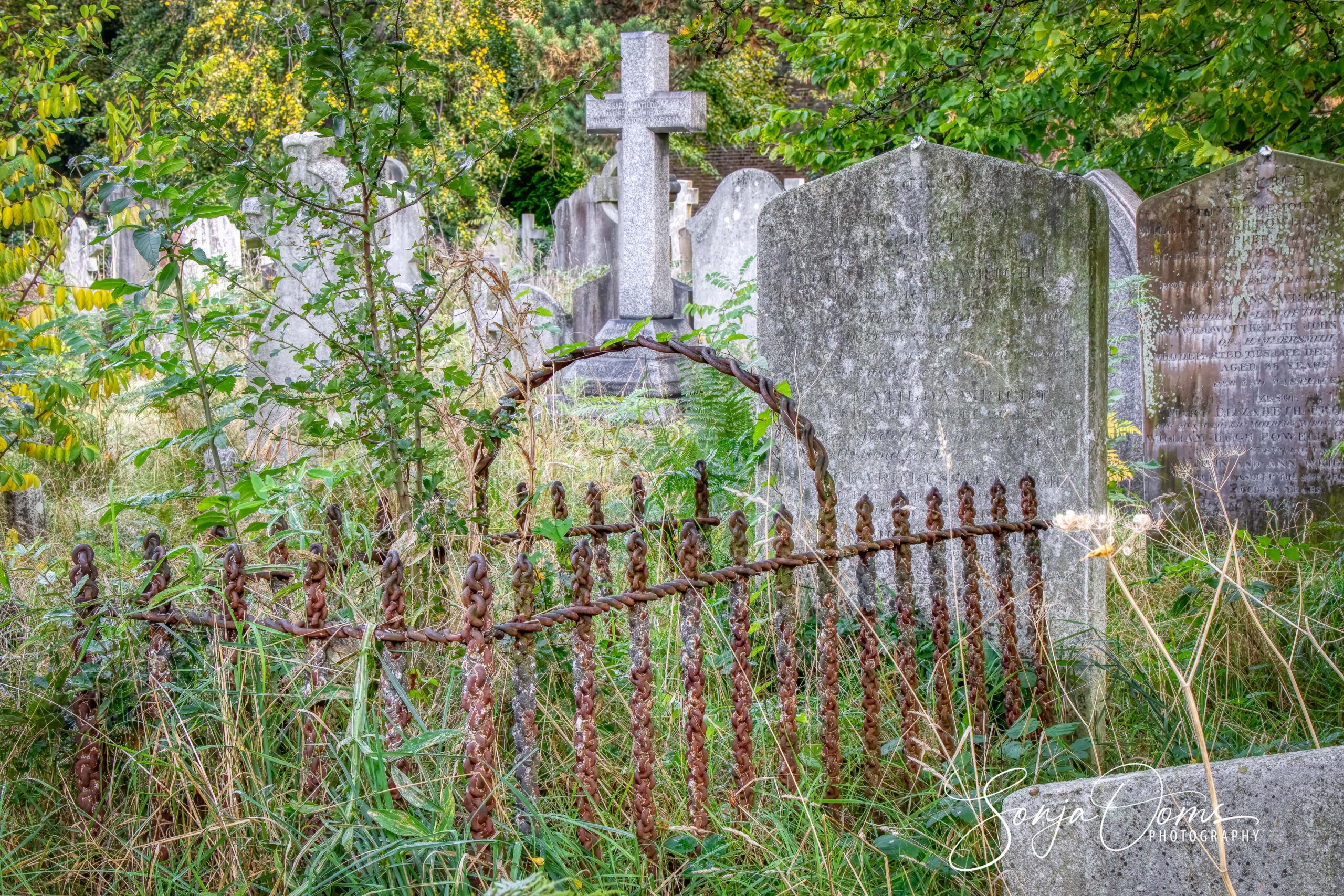
Suggesting a trip to a graveyard as a day out might get you the odd funny look. Truth be told however, London’s cemeteries are some of the most astonishing in the whole world.
Not only are these historic places of rest the permanent homes of some of London’s most famous residents, the on-site architecture is often spectacular. Little wonder some of the capital’s writers have traditionally used them as places to walk and think. So why not swap an afternoon at The Mall for a peaceful wander through one of these grand and picturesque cemeteries?
